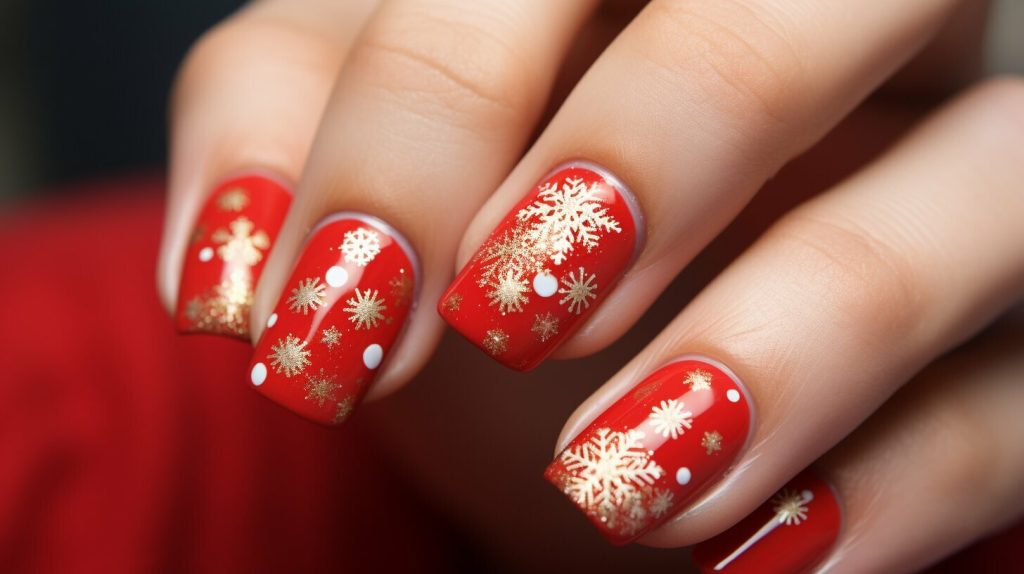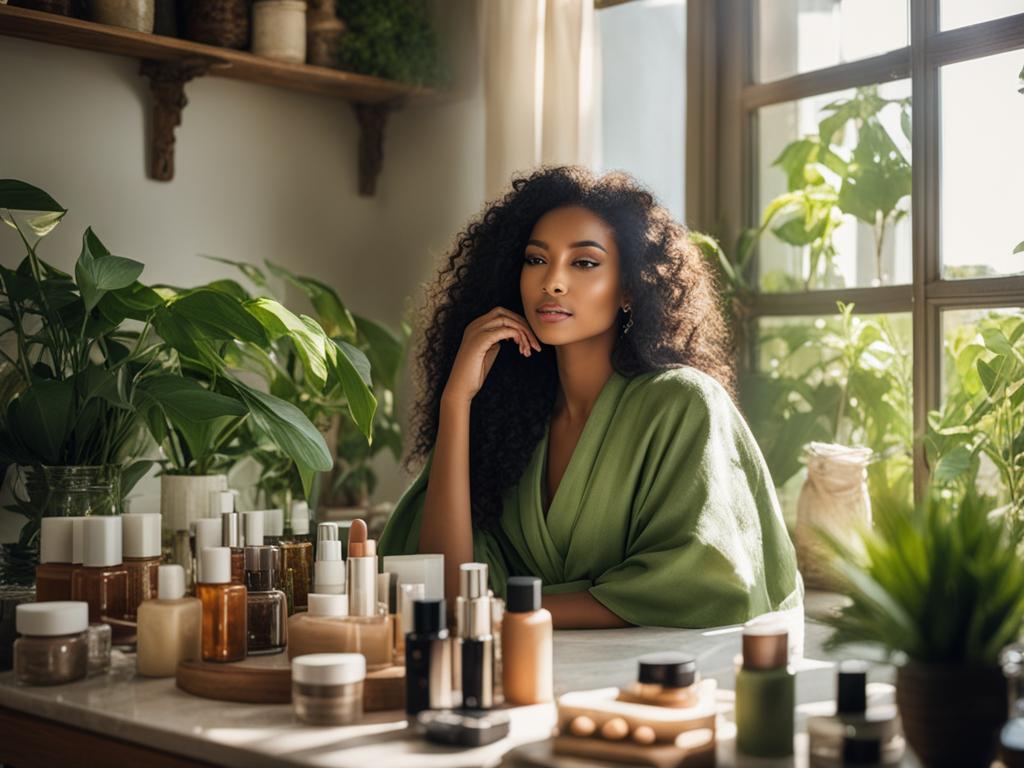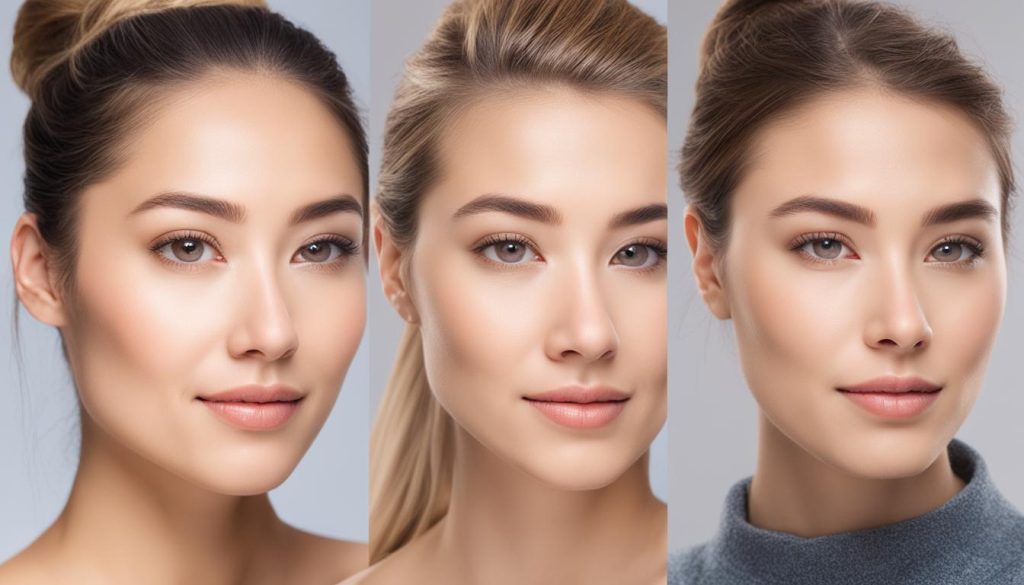To achieve youthful, glowing skin, it’s important to follow steps for skin care that target specific concerns and heal the skin from the inside out. Consistency is key to achieving and maintaining beautiful, glowing skin. In this article, I will share with you the essential steps for an effective skincare routine that will leave your skin radiant and healthy-looking.
The first and most important step in a skincare routine is cleansing. Proper cleansing removes dirt, makeup, and impurities from the skin, allowing it to breathe and absorb other products better. Toning is the next step that helps balance the skin’s pH levels and prepares it for the next skincare steps. Finally, moisturizing is essential to hydrate the skin and lock in moisture, keeping it plump and smooth.
Protecting your skin from the sun is crucial in maintaining healthy, glowing skin. UV rays from the sun can cause damage to the skin, leading to premature aging, dark spots, and an increased risk of skin cancer. Applying sunscreen with at least SPF 30 daily, wearing protective clothing, and seeking shade during peak sun hours are essential for protecting your skin from harmful UV rays.
Before starting a skincare routine, it’s important to determine your skin type. Understanding your skin type will help you choose the right products for your skincare routine. Whether you have normal, oily, dry, combination, or sensitive skin, tailoring your routine to your specific needs will yield the best results.
Establishing both a morning and night skincare routine is essential for achieving glowing skin. In the morning, start with cleansing to remove impurities, followed by toning, serum application, moisturizing, and sunscreen. In the evening, cleanse to remove makeup and dirt, tone, apply serum and eye cream, and moisturize. This complete skincare routine will ensure your skin remains healthy and radiant.
Steps for Skin Care
- Follow a skincare routine that targets specific concerns and heals the skin from the inside out.
- Cleansing, toning, and moisturizing are the essential steps in any skincare routine.
- Protect your skin from the sun by applying sunscreen and wearing protective clothing.
- Determine your skin type to choose the right products for your skincare routine.
- Establish a morning and night skincare routine for optimal results.
The Importance of Cleansing, Toning, and Moisturizing
In any skincare routine, there are three essential steps that form the foundation of a healthy and glowing complexion: cleansing, toning, and moisturizing. These steps, when done daily, can make a significant difference in the overall health and appearance of your skin.
The Power of Cleansing
Cleansing is the crucial first step in any skincare regimen. It helps remove dirt, oil, makeup, and other impurities that can accumulate on the skin’s surface throughout the day. A proper cleanse unclogs the pores, allowing the skin to breathe and absorb other skincare products more effectively.

Toning for Balance
After cleansing, toning comes next. Toning helps to balance the skin’s pH levels and remove any lingering residue from the cleanser. It also prepares the skin to better absorb the subsequent steps of your skincare routine. Toners come in various forms, such as hydrating mists, toning lotions, or exfoliating pads, catering to different skin types and concerns.
Hydrating with Moisturizer
Moisturizing is the final step in your basic skincare routine. It replenishes and locks in moisture, keeping the skin hydrated and preventing excessive water loss throughout the day. A good moisturizer provides nourishment to the skin, smoothes out the texture, and helps maintain its natural barrier function. Choose a moisturizer that suits your skin type and addresses your specific concerns, whether it be dryness, oiliness, or sensitivity.
By cleansing, toning, and moisturizing daily, you are providing your skin with the care it needs to stay healthy, balanced, and radiant. Remember to choose gentle, non-irritating products that are suitable for your skin type and follow a consistent skincare routine for optimal results.
Protecting Your Skin from the Sun
Sun protection is crucial in maintaining healthy, glowing skin. Exposure to UV rays from the sun can cause significant damage to the skin, leading to premature aging, dark spots, and an increased risk of skin cancer. It is essential to incorporate effective sun protection measures into your skincare routine to safeguard your skin from the harmful effects of the sun.
One of the most important ways to protect your skin is by applying sunscreen daily. Choose a broad-spectrum sunscreen with a minimum Sun Protection Factor (SPF) of 30 or higher to shield your skin from both UVA and UVB rays. Apply it generously to all exposed areas of your body, including the face, neck, arms, and any other areas not covered by clothing.
Remember to reapply sunscreen every two to three hours, especially if you are spending a significant amount of time outdoors or sweating excessively. Applying sunscreen liberally helps ensure that you are getting adequate protection throughout the day.
In addition to sunscreen, wearing protective clothing is a vital part of sun protection. Opt for lightweight, tightly woven clothing that covers as much skin as possible, including long-sleeved shirts, pants, and wide-brimmed hats. This clothing acts as a physical barrier against the sun’s harmful rays, reducing your skin’s exposure.
Another important tip is to seek shade during peak sun hours, typically between 10 am and 4 pm. Find refuge under trees, umbrellas, or other shaded areas to minimize direct sun exposure and reduce the risk of sunburn and skin damage.
Remember that sun protection should not be limited to sunny days only. UV rays can still penetrate through clouds, so it is crucial to incorporate sun protection into your daily skincare routine, regardless of the weather.
Your skin is precious, and protecting it from the sun’s harmful rays is vital for maintaining its health and radiance. By consistently applying sunscreen, wearing protective clothing, and seeking shade, you can safeguard your skin and enjoy the outdoors while keeping it safe from sun damage.
Determining Your Skin Type
Before starting a skincare routine, it’s important to determine your skin type. Understanding your skin type will help you choose the right products that cater to your specific needs. There are five main skin types: normal, oily, dry, combination, and sensitive.
Normal Skin
Normal skin is balanced and has an even texture and tone. It is neither too oily nor too dry, making it the ideal skin type. People with normal skin usually have small pores and rarely experience breakouts. To maintain your normal skin, focus on a skincare routine that keeps it hydrated and protects it from external aggressors.
Oily Skin
Oily skin is characterized by excess oil production and a shiny appearance, especially on the T-zone (forehead, nose, and chin). This skin type is more prone to acne, blackheads, and enlarged pores. To control oiliness and maintain a healthy complexion, use products specifically formulated for oily skin and avoid heavy or greasy moisturizers.
Dry Skin
Dry skin lacks moisture and can feel tight, flaky, and rough. It may also be more prone to sensitivity and irritation. To combat dryness, incorporate hydrating products into your skincare routine, such as gentle cleansers, rich moisturizers, and facial oils. Avoid using harsh cleansers and hot water, as they can further strip your skin of its natural oils.
Combination Skin
Combination skin is characterized by having both oily and dry areas on the face. Typically, the T-zone is oilier, while the cheeks and jawline may be drier. Balancing products that address both oiliness and dryness are key for this skin type. Use oil-absorbing products for the T-zone and moisturizing products for the drier areas.
Sensitive Skin
Sensitive skin is easily irritated and may react to certain products, ingredients, or environmental factors. It can be dry, oily, or normal in nature. When choosing skincare products, opt for gentle, fragrance-free formulations that are specifically designed for sensitive skin. Avoid harsh ingredients, abrasive scrubs, and excessive exfoliation.
Now that you have a better understanding of your skin type, you can select the appropriate skincare products and create a customized routine that addresses your specific needs and concerns. Remember to consult with a dermatologist or skincare professional if you have any doubts or persistent skin issues.

Morning and Night Skincare Routines
Establishing both a morning and night skincare routine is essential for achieving glowing skin. By following these steps consistently, you can keep your skin healthy and radiant throughout the day and while you sleep.
1. Morning Skincare Routine:
In the morning, start by cleansing your face to remove impurities accumulated overnight. Use a gentle cleanser suitable for your skin type, massaging it in circular motions. Rinse with lukewarm water and pat dry with a clean towel.
Next, it’s time for toning. Apply a toner to help balance the pH levels of your skin and further remove any residual impurities. Choose an alcohol-free toner that suits your skin type and gently pat it onto your face using a cotton pad.
After toning, apply a serum with active ingredients targeting your specific skin concerns, such as hydration, brightening, or anti-aging. Massage a few drops into your face and neck, allowing it to absorb before moving on to the next step.
Follow up with a moisturizer to nourish and hydrate your skin. Choose a moisturizer that suits your skin type, whether it’s lightweight for oily skin or richer for dry skin. Massage it into your face and neck using gentle upward motions.
Lastly, don’t forget to protect your skin from harmful UV rays by applying a broad-spectrum sunscreen with at least SPF 30. This step is crucial in preventing premature aging and maintaining healthy skin.
2. Night Skincare Routine:
In the evening, start by thoroughly cleansing your face to remove makeup, dirt, and pollutants accumulated throughout the day. Use a cleanser appropriate for your skin type and cleanse in gentle circular motions. Rinse with lukewarm water and pat dry.
After cleansing, tone your skin to remove any remaining impurities and prepare it for the next steps. Repeat the same toning process as in your morning routine.
Next, apply a serum that addresses your specific skincare concerns, such as wrinkles, dark spots, or uneven skin texture. Gently massage the serum onto your face and neck, allowing it to penetrate the skin.
Pay special attention to the delicate eye area by applying an eye cream or gel. Using your ring finger, lightly dab the product around the eye contour. This step helps moisturize and minimize the appearance of fine lines.
Finish off your night routine by applying a nourishing moisturizer to replenish your skin’s moisture barrier and promote overnight repair. Choose a nighttime moisturizer suitable for your skin type and massage it into your face and neck using upward motions.
By following these morning and night skincare routines consistently, using the right face products for your skin type, you can achieve and maintain a healthy and radiant complexion.
Conclusion
Maintaining a consistent skincare regimen is vital for achieving and maintaining healthy, glowing skin. By following the essential steps of cleansing, toning, moisturizing, and protecting your skin from the sun, you can promote a radiant complexion and improve your overall skin health.
Start your skincare routine by identifying your skin type and selecting products that are specifically tailored to meet its needs. Whether you have normal, oily, dry, combination, or sensitive skin, there are products available to address your specific concerns.
Remember, consistency is key when it comes to skincare. Make it a habit to cleanse, tone, and moisturize your skin every day, both in the morning and at night. Additionally, don’t forget to protect your skin from harmful UV rays by wearing sunscreen with at least SPF 30 and seeking shade when the sun is at its strongest.
By incorporating these essential steps into your daily skincare routine, you can achieve healthier, glowing skin and maintain your skin’s natural beauty for years to come.
FAQ
What are the essential steps for a skincare routine?
The essential steps for a skincare routine include cleansing, toning, and moisturizing. These three steps form the foundation of a skincare routine and should be done daily.
Why is cleansing important in a skincare routine?
Cleansing is important in a skincare routine as it removes dirt, makeup, and impurities from the skin, leaving it clean and refreshed.
What does toning do for the skin?
Toning helps to balance the skin’s pH levels and prepare it for other skincare products. It also helps to tighten pores and minimize their appearance.
What is the role of moisturizing in a skincare routine?
Moisturizing helps to hydrate the skin and lock in moisture. It keeps the skin soft, supple, and prevents it from becoming dry and flaky.
How important is sun protection in a skincare routine?
Sun protection is crucial in maintaining healthy, glowing skin. UV rays from the sun can cause damage, leading to premature aging, dark spots, and an increased risk of skin cancer.
What should I look for in a sunscreen?
Look for a sunscreen with at least SPF 30 that provides broad-spectrum protection against UVA and UVB rays. Apply it generously to all exposed skin and reapply every two hours or after swimming or sweating.
How do I determine my skin type?
To determine your skin type, observe how your skin feels and looks throughout the day. Normal skin is balanced, neither too oily nor too dry. Oily skin is characterized by excess oil production. Dry skin lacks moisture, while combination skin has both oily and dry areas. Sensitive skin is easily irritated and reacts to certain products or environmental factors.
What should my morning skincare routine include?
In the morning, start with cleansing to remove impurities, followed by toning to balance the skin’s pH levels. Apply a serum, moisturizer, and sunscreen with at least SPF 30 to protect your skin from the sun.
What should my night skincare routine include?
In the evening, cleanse to remove makeup and dirt, tone to balance the skin’s pH levels, and apply a serum and eye cream to address specific concerns. Finish with moisturizer to hydrate and nourish your skin while you sleep.






